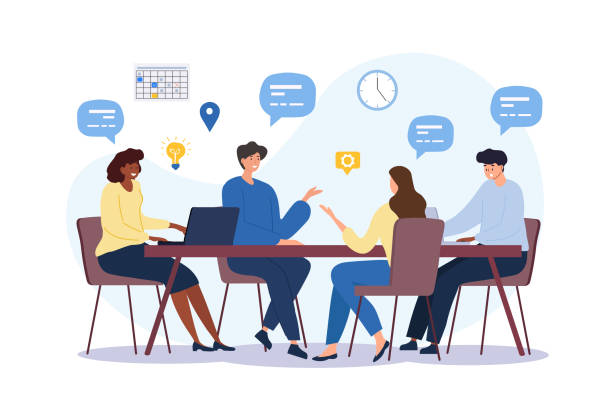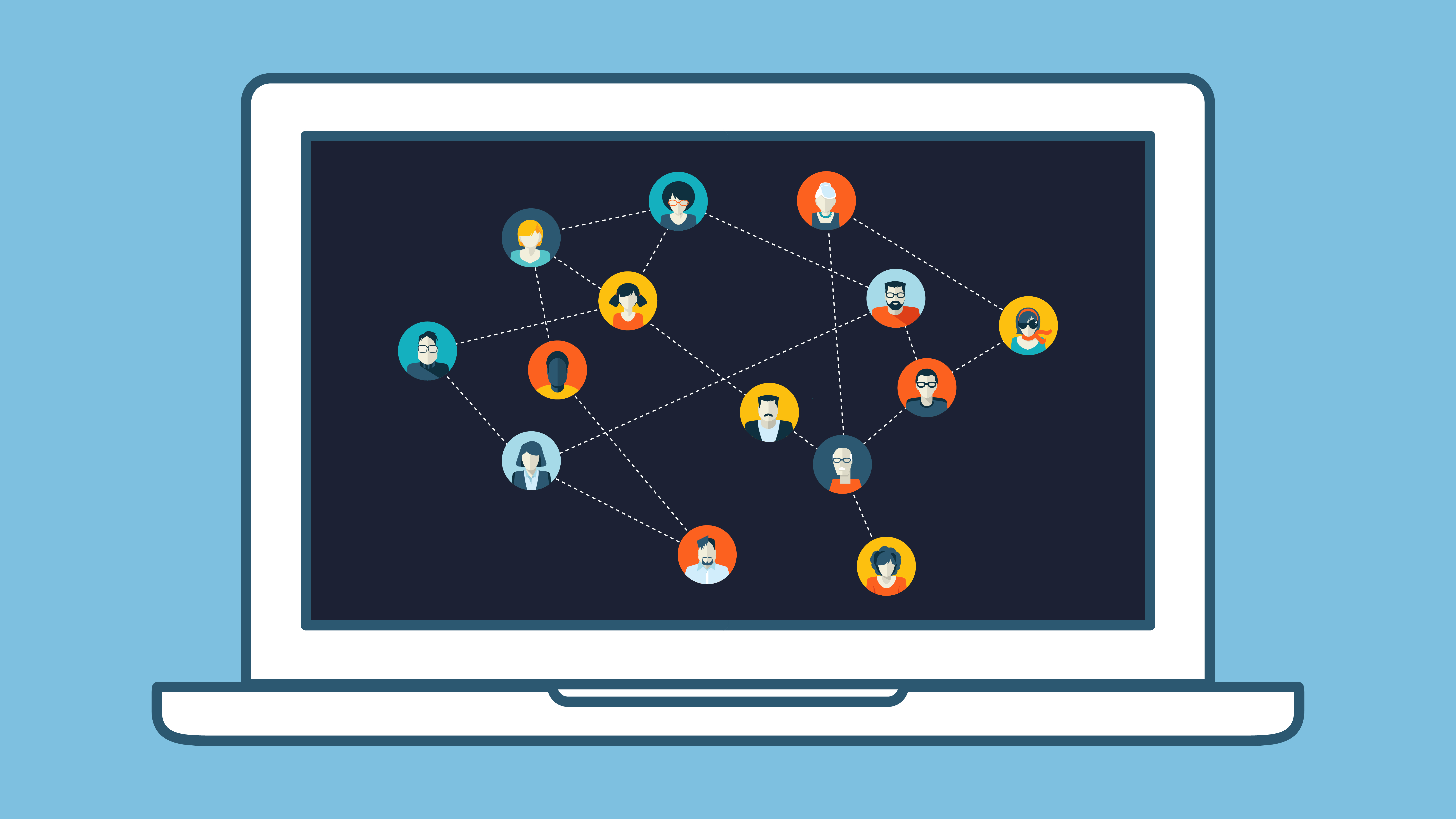
Casting a Wider Net: How Image and Video Recognition Is Revolutionizing AI Marketing
September 12, 2023
Cultivating Customer Loyalty: The Power of AI Marketing Recommendation Systems
September 13, 2023The Fundamentals of B2B Networking
B2B networking isn’t just about casual interactions or exchanging business cards; it’s about building and nurturing meaningful relationships within your industry. At its core, B2B networking is a strategic approach to connecting with professionals who can help your business grow. It’s akin to tending to a garden; you sow the seeds of relationships, water them with trust and mutual understanding, and watch them grow into valuable partnerships.
The essence of B2B networking lies in forming genuine connections that benefit both parties involved. It’s not a one-sided transaction but rather a reciprocal exchange of ideas, information, and opportunities. These connections can lead to a multitude of benefits, including new clients, partnerships, industry insights, and even personal growth.
Why B2B Networking Matters
In an era where digital tools dominate our professional lives, one might wonder why traditional networking still matters. The answer lies in the enduring power of human connections. No matter how advanced technology becomes, the trust and rapport built through face-to-face interactions remain unparalleled.
B2B networking provides a unique platform to tap into the collective knowledge and expertise of your industry. It offers opportunities to discover new business ventures, uncover hidden opportunities, and access valuable resources that can propel your organization forward. Beyond the business benefits, networking can be personally rewarding, allowing you to meet like-minded individuals, mentors, and friends who share your professional interests.
The Psychology of Building Connections
Understanding the psychology of networking is crucial for success. When people connect, they do so based on trust, respect, and shared interests. Authenticity and empathy are key drivers in building these connections. When you approach networking with a genuine interest in others and a desire to help, you create a positive impression that lingers long after the event.
Reciprocity is another fundamental principle of networking. When you offer assistance or value to others without expecting immediate returns, you set the stage for a mutually beneficial relationship. This mindset of giving before receiving often leads to unexpected opportunities and goodwill.
Setting Clear Objectives
Before stepping into any networking event, it’s essential to set clear objectives. What do you hope to achieve? Are you looking for new leads, potential partners, industry insights, or perhaps mentorship? Having well-defined goals will guide your interactions and make your networking efforts more purposeful.
Your objectives should align with your overall business strategy. For example, if your goal is to expand your client base, focus on networking events where you can connect with decision-makers in your target industries. If you’re seeking industry knowledge, prioritize events that feature informative speakers and panel discussions.

Types of Networking Events That Drive Results
Conferences: The Grand Stage
Conferences are the crown jewels of networking events in the B2B world. They gather industry experts, thought leaders, and potential clients under one roof, offering unparalleled opportunities for lead generation and knowledge sharing. These events provide a platform for you to showcase your expertise, learn from the best in the field, and connect with decision-makers who can significantly impact your business.
One of the key advantages of conferences is the diversity of attendees. You’ll encounter professionals from various sectors within your industry, giving you exposure to a wide range of potential clients or partners. The knowledge-sharing aspect is also noteworthy, as conferences often feature keynote speakers, panel discussions, and workshops that can expand your horizons and keep you updated on industry trends.
Seminars and Workshops: In-Depth Learning
While conferences provide a broad overview of industry topics, seminars and workshops offer a deeper dive into specific subjects. These events are typically smaller in scale, which means more intimate settings and opportunities for meaningful interactions.
As a participant in a seminar or workshop, you not only gain in-depth knowledge but also the chance to showcase your expertise. If you’re well-versed in a particular area, consider offering to lead a workshop or be a panellist. This positions you as an authority in your field, making you more attractive to potential leads and collaborators who attend these events with a thirst for knowledge.
Trade Shows: Niche Opportunities
Trade shows are like treasure troves for B2B lead generation. These events gather businesses and professionals that are specifically relevant to your industry. Unlike more general conferences, trade shows focus on a niche, allowing you to interact with potential clients or partners who have a direct interest in your products or services.
The layout of trade shows often involves booths or stalls, where you can set up your own space to showcase your offerings. This provides a fantastic opportunity to demonstrate your products, engage with visitors, and collect valuable leads. Additionally, trade shows often feature networking sessions or after-hours events where you can connect with attendees in a more relaxed atmosphere.
Webinars: Bridging the Gap
Webinars are a hybrid of virtual and in-person networking. They allow you to reach a global audience while still fostering valuable connections. The advantage of webinars is their accessibility; attendees can join from anywhere with an internet connection.
Hosting a webinar or being a guest speaker positions you as an industry expert and a thought leader. This exposure can lead to connections with participants who are seeking your expertise or services. Furthermore, webinars often include interactive elements like Q&A sessions and chat features, enabling real-time engagement with potential leads.
Whether you choose conferences, seminars, trade shows, or webinars, each type of networking event offers its unique advantages for B2B lead generation. Understanding these event formats and strategically selecting those that align with your business goals is a crucial step toward success in networking.

Preparing for Success: Your Networking Toolkit
Crafting an Elevator Pitch
Your elevator pitch is a concise, well-crafted introduction that succinctly communicates who you are and what you do. In the world of B2B networking, this is your verbal business card, and it can make or break a first impression.
An effective elevator pitch should be clear, engaging, and memorable. It should convey your unique value proposition in a way that resonates with your audience. To craft a compelling pitch, start by answering these questions:
- What does your company do, and what problems does it solve?
- What makes your products or services unique?
- How can you help the person you’re speaking to?
Keep it concise—your pitch should ideally be no longer than 30 seconds. Practice it until it flows naturally, but also be prepared to tailor it to different situations and audiences.
Business Cards: Old School, Still Cool
In the digital age, you might wonder if business cards are still relevant. The answer is a resounding yes. These tangible tokens of connection serve as physical reminders of your meeting and provide essential contact information.
When designing your business cards, keep the following tips in mind:
- Ensure clarity: Use legible fonts and include your name, company name, job title, phone number, email address, and LinkedIn profile URL.
- Incorporate branding: Your business cards should align with your brand colours and style to create a consistent image.
Use both sides: Maximize space by including a brief tagline or a list of your key services on the back. - Keep them handy: Always carry a supply of business cards with you, so you’re prepared to exchange contact information at networking events.
While digital contact exchange methods are prevalent, there’s something personal and professional about exchanging physical business cards. It demonstrates your commitment to making a genuine connection.
Digital Presence: Social Media and LinkedIn
Maintaining a strong online presence is crucial in today’s interconnected world, especially on professional platforms like LinkedIn. Think of your LinkedIn profile as your digital business card, resume, and networking hub rolled into one.
Here are some key tips for optimizing your LinkedIn profile:
- Professional photo: Use a high-quality, professional headshot as your profile picture.
- Compelling headline: Your headline should go beyond your job title; it should convey your unique value.
- Detailed summary: Craft a well-written summary that highlights your expertise and what you bring to the table.
- Showcase your work: Use the “Featured” section to display presentations, articles, or projects you’ve worked on.
- Active engagement: Regularly share industry insights, comment on relevant posts, and connect with professionals in your field.
LinkedIn is a powerful tool for nurturing connections beyond the initial handshake. It allows you to stay in touch, share valuable content, and engage in meaningful discussions with your network.
Dressing for Networking Success
Your attire plays a significant role in making a positive first impression at networking events. Dressing appropriately shows respect for the occasion and the people you’ll be meeting. Whether the event is formal or casual, here are some guidelines to consider:
- Research the dress code: Check the event’s website or contact the organizers to understand the expected dress code.
- Dress one level up: If you’re unsure, it’s better to be slightly overdressed than underdressed.
- Pay attention to grooming: Ensure your attire is clean and well-maintained, and pay attention to personal hygiene.
- Accessorize thoughtfully: Simple accessories can enhance your look without being distracting.
Remember that your appearance is a reflection of your professionalism and attention to detail. When you’re well-dressed and confident in your attire, it can boost your self-assurance during networking interactions.

Mastering the Art of Conversation
Breaking the Ice
Starting a conversation at a networking event can be intimidating, even for seasoned professionals. The key is to approach it with a friendly and open attitude. Here are some ice-breaking strategies to help you initiate conversations smoothly:
- Compliments: A genuine compliment on someone’s attire, presentation, or even their insightful comment during a talk can be a great conversation starter.
- Common Ground: Identify shared interests, such as topics discussed at the event or the venue itself. Commenting on these commonalities can create an instant connection.
- Open-Ended Questions: Ask questions that require more than a simple “yes” or “no” answer. For instance, “What brings you to this event?” encourages a more in-depth response.
Remember that everyone is attending the event to network, so most people are open to conversations. Approach each interaction with a positive mindset, and you’ll find it easier to break the ice.
Active Listening: The Golden Rule
Active listening is an often underestimated skill in networking. It’s not just about hearing the words; it’s about understanding and showing genuine interest in what the other person is saying. Here’s how you can become a better active listener:
- Maintain eye contact: It shows that you’re fully engaged in the conversation.
- Avoid interrupting: Let the other person finish speaking before you respond.
- Ask follow-up questions: This demonstrates that you’re actively processing the information and interested in learning more.
- Empathize: Put yourself in the other person’s shoes to understand their perspective.
By actively listening, you create a more meaningful and memorable conversation. People appreciate when they feel heard and understood.
Storytelling: Making an Impact
Storytelling is a powerful tool in networking because it makes you and your message more relatable and memorable. Instead of bombarding someone with a list of accomplishments or services, share relevant anecdotes and experiences that illustrate your expertise and personality.
When crafting stories for networking, keep these tips in mind:
- Relevance: Ensure your stories are relevant to the context and the person you’re speaking with.
- Clarity: Tell your stories clearly and concisely to maintain the listener’s interest.
- Emotion: Incorporate emotions into your stories; they make your narrative more engaging and relatable.
- Lesson or Insight: Conclude your story with a lesson, insight, or a question that prompts further discussion.
Well-told stories can create a lasting impression and provide a unique way for others to remember you and your business.
The Art of the Follow-Up
The networking event might end, but the connections you’ve made shouldn’t. The follow-up is a critical step in turning a brief encounter into a valuable relationship. Here’s how to master the art of the follow-up:
- Timeliness: Send a follow-up message within 48 hours of the event. It shows that you value the connection and want to keep the momentum going.
- Personalization: Customize your follow-up message to remind the person of your conversation and express your interest in continuing the discussion.
- Offer Value: Provide something of value in your follow-up, whether it’s a resource, an article, or an invitation to coffee.
- Express Gratitude: Always express your gratitude for the opportunity to connect.
The follow-up is where many networking efforts fall short. By consistently and thoughtfully following up with your contacts, you can set yourself apart and nurture relationships that lead to business opportunities.

Networking Etiquette and Best Practices
Approaching Groups with Grace
Navigating group conversations at networking events can be a bit tricky. You might encounter a cluster of people engaged in a discussion, and joining in requires finesse. Here are some tips for approaching groups with grace:
- Observe First: Take a moment to observe the conversation’s dynamics, topic, and tone before introducing yourself.
- Wait for a Lull: Avoid interrupting. Wait for a natural pause in the conversation to interject with a polite introduction.
- Contribute Meaningfully: When you do join the conversation, contribute value by sharing insights or asking relevant questions.
- Introduce Others: If you know someone in the group, introduce them to others. It’s a gesture that fosters inclusivity.
Remember, group conversations are opportunities to showcase your knowledge and interpersonal skills, so make the most of them.
Managing Time and Energy
Networking events can be overwhelming, especially if they’re long or involve numerous interactions. Managing your time and energy effectively is essential to make the most of these events.
Here are some strategies:
- Set Time Limits: Allocate a specific amount of time to spend with each contact to ensure you engage with a variety of people.
- Prioritize Connections: Identify individuals you definitely want to meet and prioritize them in your networking efforts.
- Take Breaks: If the event is lengthy, take short breaks to recharge and collect your thoughts.
- Hydrate and Eat: Stay hydrated and eat appropriately to maintain your energy levels.
By managing your time and energy, you’ll be more focused, approachable, and able to make meaningful connections throughout the event.
Diversity and Inclusivity in Networking
Diversity enriches your network and brings fresh perspectives to your business. Networking events provide opportunities to connect with people from various backgrounds, and it’s important to be inclusive in your interactions.
Here are some steps to promote diversity and inclusivity in your networking efforts:
- Expand Your Circle: Make a conscious effort to connect with individuals from different ethnicities, genders, ages, and industries.
- Listen Actively: Be open to different viewpoints and experiences, and show respect for diverse perspectives.
- Support Inclusive Events: Attend and promote events that actively promote diversity and inclusion within the industry.
- Offer Mentorship: If possible, consider offering mentorship or guidance to individuals from underrepresented groups.
Incorporating diversity and inclusivity into your networking strategy not only fosters a more inclusive industry but also opens doors to unique opportunities and insights.
Handling Rejections with Resilience
Not every interaction at a networking event will lead to a partnership or a promising lead, and that’s perfectly normal. Handling rejections gracefully and with resilience is a skill that separates successful networkers from those who become discouraged.
Here’s how to cope with rejections:
- Maintain a Positive Attitude: Approach each interaction with a positive mindset, regardless of the outcome.
- Learn from Rejections: Analyze why a particular interaction didn’t lead to a desired outcome. Use it as a learning experience for future networking efforts.
- Don’t Take It Personally: Remember that rejections are often a result of circumstances or timing, not a reflection of your worth or capabilities.
- Move On with Confidence: After a rejection, shift your focus to the next interaction with confidence and enthusiasm.
Networking is a numbers game, and the more interactions you have, the greater the chance of finding valuable connections. By handling rejections with resilience, you’ll maintain your momentum and increase your chances of success.

Measuring Networking ROI: From Contacts to Leads
Tracking and Analyzing Your Connections
The value of networking isn’t solely in the number of business cards you collect; it’s in the quality of the connections you make. To measure the return on investment (ROI) of your networking efforts, you need to track and analyze your connections effectively.
Start by creating a system to organize your contacts, whether it’s a CRM (Customer Relationship Management) tool or a well-structured spreadsheet. For each contact, record key information such as their name, company, position, how you met them, and any specific details from your conversation.
Next, set measurable goals for your networking efforts. Define what success looks like for you. For example, your goal might be to convert a certain percentage of your networking contacts into leads or clients within a specified timeframe.
Once you have your system in place, regularly review and analyze your connections. Identify patterns and trends in your networking efforts. Are certain events or strategies consistently yield better results? Use this data to refine your approach and focus on the most fruitful opportunities.
Converting Contacts into Leads
Collecting business cards and LinkedIn connections is just the beginning of your networking journey. The real value lies in converting these contacts into leads—potential clients or partners who are genuinely interested in what you offer.
To convert contacts into leads effectively, follow these steps:
- Segment Your Contacts: Divide your contacts into categories based on their potential as leads. Some contacts may be warm leads who expressed a strong interest, while others might need more nurturing.
- Nurture Relationships: Maintain regular communication with your contacts. Share valuable content, invite them to webinars or events, and keep them updated on your business.
- Offer Value: Provide solutions to their pain points or challenges. Show how your products or services can address their specific needs.
- Set Clear Next Steps: When the time is right, have a clear call to action. Whether it’s scheduling a follow-up meeting, providing a quote, or sending a proposal, make the next steps easy and clear.
Remember that the goal is not just to convert contacts into one-time clients but to build long-term relationships that can lead to repeat business and referrals.
Building Long-Term Relationships
Networking isn’t just about immediate gains; it’s also about cultivating long-term relationships that can benefit your business over time. Building and maintaining these relationships is a strategic endeavour that requires patience and consistency.
Here are some strategies for nurturing long-term relationships:
- Stay in Touch: Regularly reach out to your contacts, even when you’re not actively pursuing a business opportunity. Send updates, holiday greetings, or articles of interest.
- Offer Support: Be genuinely interested in your contacts’ success. Offer your assistance, insights, or referrals when you can.
- Celebrate Milestones: Acknowledge your contacts’ achievements and milestones. Whether it’s a work anniversary or a new venture, your congratulations will be appreciated.
- Seek Collaboration: Explore opportunities for collaboration, whether it’s co-hosting an event, working on a project together, or referring clients to each other.
Long-term relationships can lead to a steady stream of referrals, repeat business, and a strong network of trusted professionals.
The Role of CRM Systems
Managing a growing network of contacts and leads can become challenging without the right tools. This is where Customer Relationship Management (CRM) systems come into play.
A CRM system is a software solution designed to help businesses organize, track, and manage their interactions with contacts and leads. It centralizes all relevant information, from contact details and conversation history to notes and follow-up tasks. A well-implemented CRM system can significantly streamline your networking efforts and enhance your ability to convert contacts into leads.
When choosing a CRM system, consider factors like scalability, ease of use, and integration with other tools you use in your business. Popular CRM platforms like Salesforce, HubSpot, and Zoho CRM offer a range of features to support your networking and lead-generation efforts.
By effectively utilizing CRM systems, you can enhance your ability to measure the ROI of your networking activities and build sustainable relationships with potential clients and partners.

The Future of B2B Networking: Virtual vs. In-Person
The Rise of Virtual Networking
In recent years, the landscape of networking has undergone a significant transformation with the rise of virtual events and online networking platforms. The COVID-19 pandemic accelerated this shift, pushing professionals to explore new ways of connecting remotely.
Virtual networking offers several advantages:
- Global Reach: Virtual events allow you to connect with professionals from around the world, broadening your network.
- Cost-Effective: You can attend virtual events without the expenses associated with travel, accommodation, and physical presence.
- Convenience: Virtual networking is accessible from the comfort of your home or office, saving you time and energy.
Virtual networking can take various forms, from webinars and virtual conferences to online forums and social media groups. Embracing these opportunities can complement your in-person networking efforts and increase your reach.
Blending Virtual and In-Person Strategies
While virtual networking has its advantages, it doesn’t replace the value of in-person interactions entirely. The best networking strategies often involve a blend of both virtual and in-person approaches.
Here’s how you can combine these strategies effectively:
- Use Virtual as a Bridge: Use virtual events to initiate connections and conversations. Follow up with in-person meetings or calls to strengthen relationships.
- Virtual Follow-Ups: After in-person events, maintain connections through virtual means. Send follow-up emails, engage on social media, or set up virtual coffee chats.
- Hybrid Events: As the world reopens, anticipate a surge in hybrid events that offer both in-person and virtual attendance options. Consider participating in these events to maximize your reach.
Balancing virtual and in-person networking strategies allows you to adapt to changing circumstances and connect with professionals regardless of physical barriers.
Predictions for the Future
The future of B2B networking is exciting and dynamic, driven by technological advancements and evolving business needs. Here are some predictions for the future of networking:
- Augmented Reality (AR) and Virtual Reality (VR): AR and VR technologies will enhance virtual networking experiences, creating immersive environments for online events.
- AI-Powered Matching: Artificial intelligence will play a larger role in connecting professionals with similar interests and goals, making networking more efficient.
- Data-Driven Insights: Networking platforms will provide detailed analytics on the effectiveness of your interactions, helping you refine your strategy.
- Sustainability: Networking events will increasingly prioritize sustainability, with a focus on reducing carbon footprints and eco-friendly practices.
- Personalization: Networking experiences will become more personalized, tailoring recommendations and connections based on individual preferences.
Staying adaptable and open to these innovations will be key to thriving in the ever-evolving landscape of B2B networking.
In conclusion, networking and events remain potent tools in B2B lead generation. Understanding the fundamentals, mastering the art of conversation, adhering to best practices, and utilizing modern tools like CRM systems are all essential components of successful networking. Whether in-person or virtual, the future of B2B networking holds exciting possibilities, and staying informed and adaptable will be the key to continued success in building valuable connections that drive business growth.


